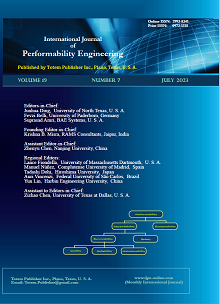-
Recommender System: Towards Identification of Shilling Attacks in Rating System Using Machine Learning Algorithms
- Manpreet Kaur and Shalli Rani
-
2023, 19(7):
443-451.
doi:10.23940/ijpe.23.07.p3.443451
-
 Abstract
Abstract
 PDF (362KB)
PDF (362KB)

-
References |
Related Articles
Recommender System is a software tool that considers multiple parameters like the interest of a user, historical user data, browsing behavior, etc. to provide suitable recommendations. From e-commerce to social websites and from online research articles to entertainment, recommender systems have successfully rooted themselves in almost every application domain. Due to the popularity gain and people reliance on the recommendations generated in almost every domain, recommender systems have become vulnerable to online attacks known as shilling attacks or false rating attacks. An insight of recommender systems along with an analysis of shilling attacks is performed in this paper. These attacks are very common in social media to make the content popular among users by false ratings. Therefore, to find out the effect of false ratings, analysis of average, bandwagon attack, hybrid, and segment attacks are done on the basis of specificity, sensitivity, recall, precision and F-measure on Netflix and Movie lens dataset. These attacks should not affect food product items because most people purchase online items on the basis of ratings only. A good recommender system can overcome these attacks. Therefore, to deal with the above challenge of false ratings’ attack, an ensemble learning model has been proposed to classify the individuals which are most similar to the target user so that relevant recommendations are made to each user as well. The proposed approach is validated for dataset of the German online reviews/rating of organic coffee, to determine the customer demand for a particular brand of coffee using Machine learning algorithms. The comparative results show that proposed approach is better than Locally Deep Support Vector Machine,Neural Network, Logistic Regression, Bayes Point, and Decision Forest algorithms with an accuracy of 98 percent.

